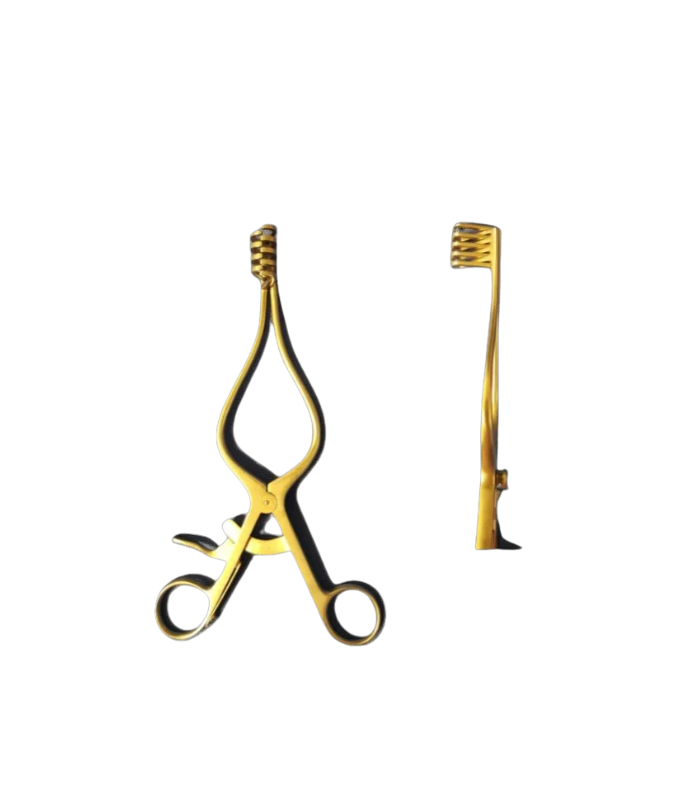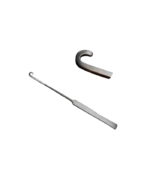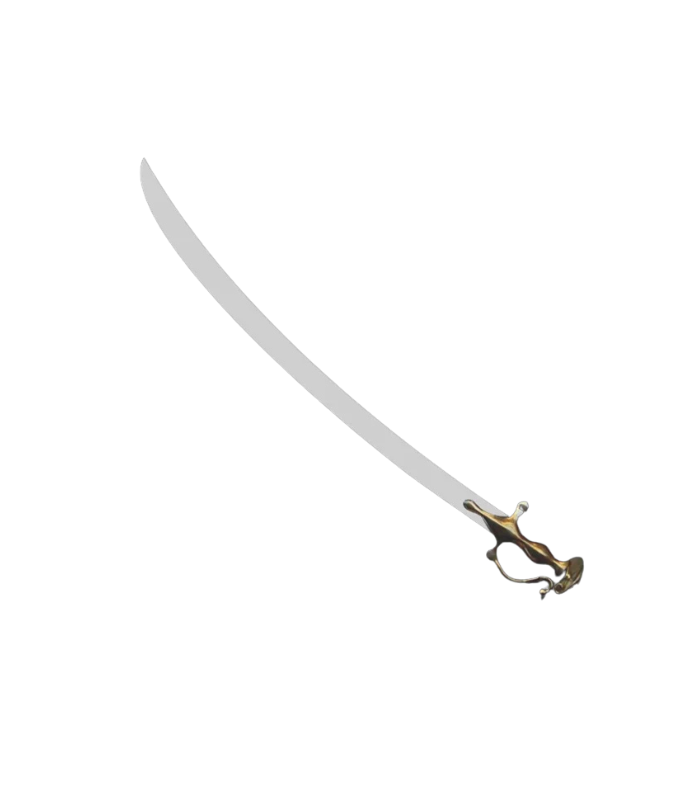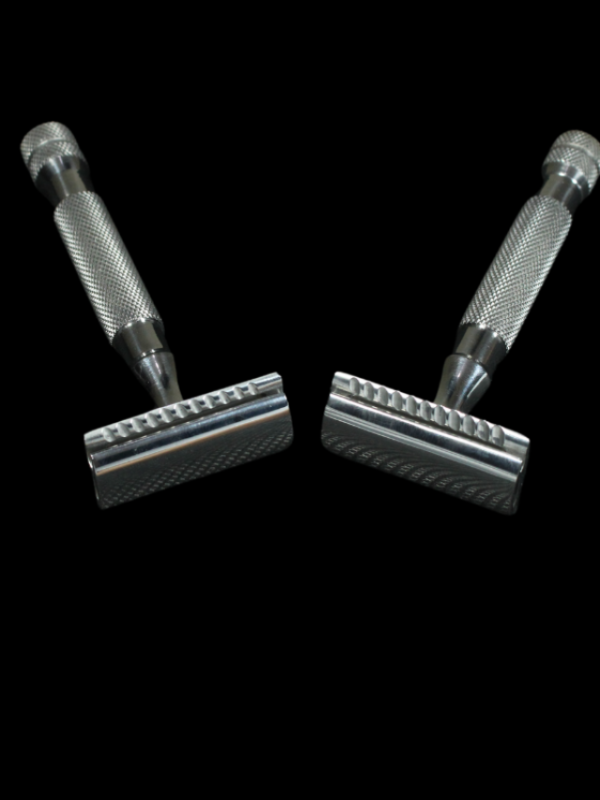Ultimate Guide to Cleaning Your Safety Razor After Shaving

Why Clean Safety Razor is Important
The importance of regularly clean safety razor cannot be overstated. A properly maintained clean safety razor ensures optimal performance and enhances the shaving experience. Over time, residues from shaving creams, oils, and hair can accumulate on the razor blades and components, hindering usability. By keeping your razor clean, you minimize the chances of clogged blades, which can lead to an uneven shave and potential skin irritation. An efficient cleaning routine prevents the build-up of grime, ensuring every shave is as smooth and precise as the first.
Read more: Ultimate Guide to Cleaning Your Safety Razor After ShavingMoreover, cleaning your safety razor plays a critical role in preventing rust and corrosion. When water, shaving products, and hair particles are left on the razor, they can create an environment conducive to rust formation. Rust not only deteriorates the performance of the blades but can also pose a risk to skin health. A clean safety razor, free from moisture and debris, greatly reduces the likelihood of corrosion, which can extend the life of the razor. This is particularly important for those invested in high-quality razors, as maintaining their integrity preserves their function and appearance over time.
From a hygiene perspective, a clean safety razor protects against bacteria and infections. Bacteria thrive in damp and dirty environments, which can lead to skin irritation or serious infections. By ensuring that your safety razor is cleaned regularly, you are safeguarding your skin and overall health. Lastly, consistent maintenance contributes significantly to the longevity of the razor. A well-cared-for safety razor can last for many years, providing an excellent return on investment for those who prioritize their grooming routine. In short, regular cleaning is an essential practice for not only enhancing the effectiveness of your shaving tool but also for ensuring a comfortable and safe experience with each use.
Introduction to Safety Razors
Safety razors are a popular choice among grooming enthusiasts seeking a sustainable and efficient alternative to traditional cartridge razors. These razors utilize a single, sharp blade that is replaceable, promoting a cleaner shave while significantly reducing plastic waste associated with disposable razors. One of the most compelling advantages of a safety razor is its eco-friendly nature, being 100% plastic-free. This characteristic aligns well with an increasing demand for environmentally sustainable grooming products, making safety razors a responsible choice for the conscientious consumer.
A noteworthy feature of safety razors is the twist-to-open mechanism, which allows users to easily change blades while minimizing the risk of cuts or nicks. Unlike the complex designs of multi-blade cartridges, safety razors offer a straightforward and user-friendly approach to shaving. This simplicity does not compromise performance; in fact, many users find that the single blade system provides a closer, more comfortable shave with less irritation compared to traditional razors. Proper blade alignment is integral to achieving the best results, as it ensures that the blade sits correctly against the skin, enhancing the overall shaving experience.
Moreover, the longevity of safety razor blades contributes to their cost-effectiveness. Instead of discarding entire razors or cartridges, users only need to replace the blades, which are often sold in bulk at a fraction of the price of cartridge systems. This economical aspect, combined with the clean safety razor’s reduced environmental footprint, makes it an appealing option for those looking to make smarter grooming choices. Ultimately, adopting a safety razor can lead to both financial savings and a noteworthy reduction in personal plastic consumption.
Gathering the Right Supplies for Cleaning
Maintaining a clean safety razor is essential not only for hygiene but also for ensuring the longevity of the device. To effectively clean your safety razor, it is important to gather the appropriate supplies beforehand. Selecting the right tools can make the process seamless while protecting the integrity of the stainless steel components.
First and foremost, consider a mild cleanser. Harsh chemicals can damage the finish of your safety razor and lead to corrosion over time. Look for pH-neutral soaps or gentle dish soaps devoid of strong fragrances or colorants. These milder options will thoroughly clean without compromising the quality of your razor.
In addition to a suitable cleanser, you will need a brush for any stubborn residues or hair clippings that may cling to the razor after shaving. A soft-bristled brush, such as those made from nylon or natural fibers, is ideal. Avoid using any bristles that are too abrasive, as they may scratch the surface of your razor and diminish its shine. A toothbrush can serve as an effective alternative, ensuring that you can reach even the most intricate parts of the razor head.
Furthermore, a microfiber cloth or soft cotton towel is essential for drying the safety razor after cleaning. These materials are gentle on stainless steel and will effectively absorb moisture without leaving behind lint or scratches. It is advisable to avoid using any abrasive towels or materials, as they may cause damage over time.
Lastly, while not strictly necessary, a small bowl can be quite useful for soaking your safety razor in the cleaning solution, allowing for a thorough cleanse. By carefully selecting these supplies, you can ensure that your safety razor remains in prime condition, allowing for an optimal shaving experience.
Step-by-Step Cleaning Process
Maintaining a clean safety razor is essential for ensuring a smooth and safe shaving experience. The cleaning process begins with disassembling the razor using the twist-to-open feature, which is a hallmark of many high-quality safety razors. Start by twisting the handle to open the razor head, separating it from the handle. With this simplistic mechanism, the blade can be removed easily, ensuring safety throughout the cleaning process.
Next, carefully lift out the used blade and set it aside in a designated container for blade disposal. It is crucial never to handle the blade with bare hands as it can lead to cuts. After the blade has been safely stored, focus on the razor head. Rinse the head under warm water to remove shaved hairs, soap residue, and any other debris. For a more thorough cleaning, use a soft-bristled toothbrush or cloth to gently scrub the areas, particularly in between the razor’s components where hair might accumulate.
The handle of the safety razor also requires attention. Use warm soapy water and a cloth to wipe down the handle, ensuring to remove any oils or grime accumulated from frequent use. Once all components have been cleaned, rinse them under running water to ensure no soap remains. This will help avoid irritation during your next shave.
When reassembling the clean safety razor, ensure that the blade is properly aligned in the head. Poor blade alignment can lead to nicks and cuts during shaving. To check for alignment, gently tighten the razor head by twisting while observing the blade position. The edges of the blade should be even on both sides. Following these steps will extend the life of your safety razor, keeping it clean and efficient for many uses to come.
How to Maintain Your Safety Razor Between Shaves
Maintaining your clean safety razor between shaving sessions is crucial to ensuring its longevity and effectiveness. Proper care not only preserves the razor’s sharpness but also helps in preventing any potential buildup of bacteria, rust, or corrosion. One of the most important practices is to thoroughly dry the razor after each use. Water left on the razor can lead to rust formation, which would compromise its performance. To achieve this, gently pat the razor dry with a clean towel or allow it to air dry in a well-ventilated area.
Another key aspect of care includes proper storage. It is advisable to store your safety razor in a dry place, away from damp environments such as bathrooms. A moisture-free drawer or shelf is ideal, as it prevents exposure to humidity that can cause corrosion. Additionally, consider using a specific storage case or a razor stand that elevates the razor from contact with surfaces, further reducing the risk of moisture accumulation.
Removing the blade from the safety razor is also recommended between shaves. This allows for thorough cleaning of both the razor and the blade, minimizing rust and grime build-up. While the blade is out, inspect it for signs of wear and replace it as needed to maintain an optimal shaving experience. If you notice dullness, it can lead to nicks and cuts, reducing the overall effectiveness of the clean safety razor.
Furthermore, occasional deep cleaning of the razor is beneficial. Soaking the components in warm, soapy water and then rinsing them thoroughly ensures that all remnants of shaving cream and hair are eliminated. Remember, the longevity of your safety razor significantly depends on the care it receives between shaves, making these maintenance practices essential.
Common Mistakes to Avoid When Cleaning Safety Razors
Maintaining the cleanliness of a safety razor is crucial not only for optimal performance but also for ensuring a hygienic shaving experience. However, there are several common mistakes that people often make when cleaning their razors that can lead to ineffective cleaning and, in some cases, damage to the razor itself. Understanding these pitfalls can help ensure a longer lifespan for your clean safety razor.
One prevalent mistake is the use of abrasive cleaners or scrubbers during the cleaning process. While it may seem intuitive to use harsh chemicals or rough materials to remove buildup or stains, such actions can scratch or tarnish the metal surfaces of the razor. Instead, opting for mild anti-bacterial soap and a soft cloth or sponge promotes the longevity of the razor while effectively removing soap scum and other residues.
Another common issue is improper handling during the cleaning process. Many users neglect to disassemble their safety razors, which can lead to soap and hair becoming trapped in hard-to-reach areas, creating a breeding ground for bacteria. It is advisable to fully disassemble the razor and thoroughly clean each component separately. This practice not only improves cleanliness but also ensures that the razor continues to perform at its best.
Furthermore, individuals often overlook the importance of rinsing thoroughly and drying properly. Residual water and soap can lead to rusting, particularly on non-stainless steel models. After cleaning, it is essential to rinse each part with warm water and dry it completely with a microfiber cloth to prevent corrosion and maintain the razor’s overall condition.
Lastly, many individuals may ignore regular maintenance of their clean safety razor. Establishing a consistent cleaning routine after each use can significantly reduce the buildup of debris and bacteria. By avoiding these common mistakes, safety razor users can enjoy a more effective and hygienic shaving experience.
Signs Your Safety Razor Needs More Attention
Maintaining your clean safety razor is essential for both hygiene and optimal shaving performance. Over time, certain indicators may signal that your razor requires deeper cleaning or maintenance. Recognizing these signs promptly can help prolong the lifespan of your razor and ensure a superior shaving experience.
One of the most visible signs that your safety razor needs attention is the formation of rust. If you notice any discoloration on the razor or on the blades, it may indicate that moisture has accumulated, leading to corrosion. Rust not only affects the appearance of your razor but can also lead to potential skin irritations after shaving. To prevent rust, ensure that your clean safety razor is thoroughly dried after each use.
Another indicator to watch for is persistent odors emanating from your safety razor. This could be a result of residual shaving cream, hair, or skin cells trapped in the mechanism. If you find that your razor has an unpleasant smell, it is a clear sign that deeper cleaning is needed. Regular cleaning with warm, soapy water will help eliminate these odors, ensuring a fresh shaving tool.
Additionally, you may experience difficulty in blade alignment or loading the blade into the razor. A safety razor that does not hold the blade securely or consistently can lead to subpar shaving experiences, including nicks and irritation. This misalignment is often a result of grime build-up or wear, and it serves as an important reminder that your clean safety razor may require disassembly and thorough cleaning.
By being attentive to these signs, you can ensure your safety razor remains in optimal condition and continues to deliver effective and safe shaving. Regular maintenance will not only enhance your shaving experience but will also support the longevity of your grooming tool.
The Environmental Impact of Using Safety Razors
In recent years, there has been a growing concern regarding the environmental ramifications of single-use products, particularly disposable razors. The transition to a clean safety razor can significantly mitigate these effects. Traditional disposable razors are often composed of a variety of plastics that take centuries to decompose, contributing to the increasing burden of plastic pollution in landfills and oceans. In contrast, safety razors are typically manufactured from non-magnetic stainless steel, an enduring material that is 100% recyclable. This fundamental difference marks a critical advantage for eco-conscious consumers.
By opting for a clean safety razor, individuals participate in a circular economy where the materials can be reprocessed, further reducing the overall waste generated. Each blade can be recycled, and since safety razors have a longer lifespan due to their robust construction, the frequency of replacements diminishes dramatically. As a result, the total amount of waste produced is markedly reduced when compared to the routine disposal associated with plastic razors.
Additionally, the manufacturing process of disposable razors often involves significant energy consumption and carbon emissions, adding to their environmental footprint. In contrast, the production of safety razors generally requires fewer resources over time due to their durability and the reduction in frequent purchases. Furthermore, adopting safety razors also contributes to lesser water usage in comparison to elaborate multi-blade disposable designs that necessitate extensive packaging.
The combined impacts of selecting a clean safety razor extend beyond personal grooming rituals; they reflect a broader commitment towards sustainable living. In the context of increasing awareness surrounding climate change and ecological preservation, the advantages of switching to safety razors become evident. By making this simple yet effective change, consumers not only enhance their shaving experience, but also play an integral role in promoting environmental responsibility.
Conclusion and Final Thoughts
In this guide, we have explored the essential practices for maintaining a clean safety razor, ensuring both optimal performance and longevity. Proper cleaning not only contributes to the efficiency of your shaving routine but also plays a significant role in hygiene. A clean safety razor can help prevent irritation, razor burn, and infections, making it a crucial aspect of personal grooming.
Key practices include rinsing the razor after each use, disassembling it for a thorough clean as needed, and ensuring that all components, including the blade and handle, are free from lather residue and hair. Regular maintenance, such as soaking the razor in a cleaning solution, can also enhance its durability and performance. By integrating these cleaning tips into your grooming routine, you can enjoy a better shaving experience while extending the lifespan of your safety razor.
As you implement these strategies, consider sharing your own experiences and tips regarding the care of your safety razor. Engaging with others who utilize this shaving method could provide valuable insights and foster a community focused on best practices. We invite you to comment below, sharing what has worked for you or any additional techniques you have discovered in your own shaving journey. Together, we can enhance the collective knowledge about maintaining a clean safety razor for the benefit of everyone.

























































addition to cleansing and exfoliation, softening the hair is paramount for a close shave. A warm washcloth or towel